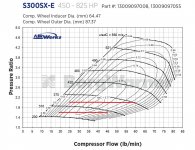BigRigTech
New member
I’ve been gathering parts for a while now to build a blow thru 300 turbo deal. I have 2 carb’d heads and an EFI head here. Im trying to decide which head to use? I have a pair of EFI exhaust manifolds, offy intake with a Holley 600DP (may use a 500 2bbl) and Borg Warner s364.5sxe turbo. I’m planning on a small cam upgrade and roller rockers as well. I’m a truck and transport mechanic so I’ll be doing the fab and assembly myself. Thanks in advance.

